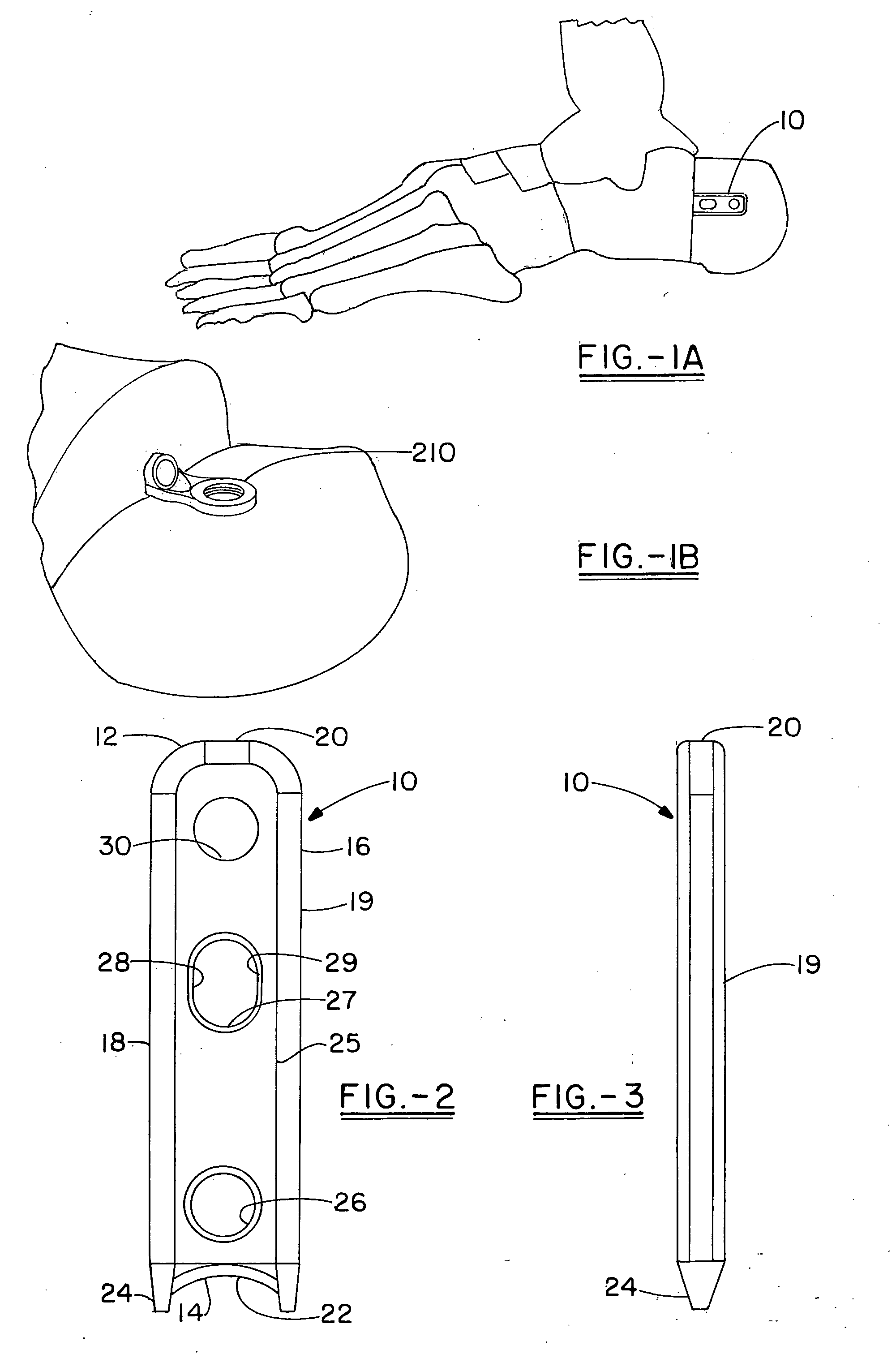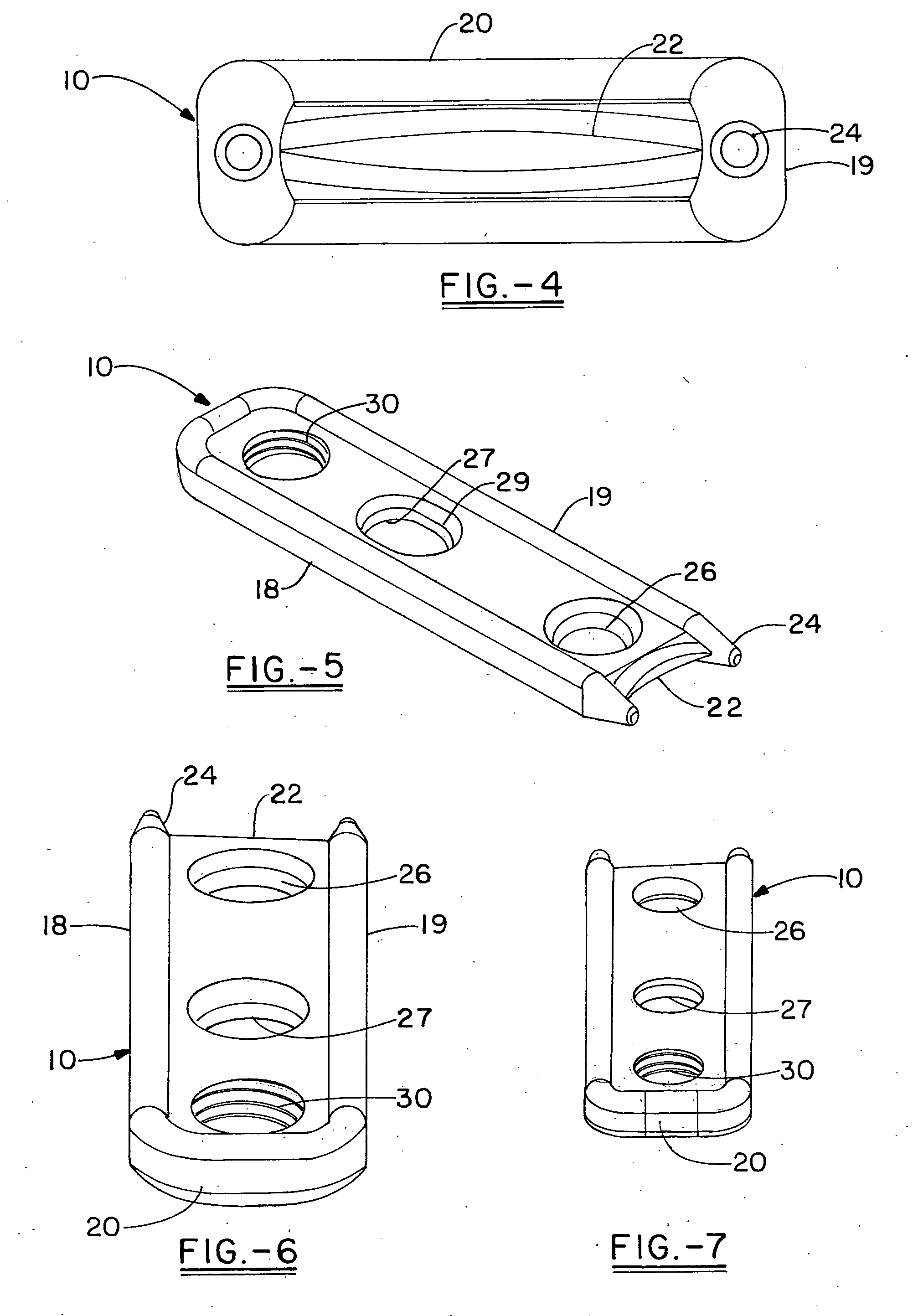Osteotomy plate, plate driver and method for their use
a technology of osteotomy and plate driver, applied in the field of osteotomy plate, can solve the problems of severe fracture and/or dislocation, development of problems, and often the subject of trauma to the midfoot, and achieve the effects of promoting bone insertion, good advantage of osteotomy, and reducing the width of the pla
- Summary
- Abstract
- Description
- Claims
- Application Information
AI Technical Summary
Benefits of technology
Problems solved by technology
Method used
Image
Examples
first embodiment
[0046]As viewed from the top in FIG. 2, it can be seen that the plate 10 has a rectangular shape with a first end 12 and an opposing cutting end 14 aligned along the longitudinal axis of the plate. The peripheral edges 16 of the plate are raised on three sides, including the two long sides 18, 19 and the squared short wall 20. These edges form rails that help to provide stability for the plate and in particular to inhibit torsion of the plate during insertion and during the recuperation period in which the injury fuses. The rails are rounded at the corners of the squared short wall 20. The opposing short wall includes a chamfered cutting surface 22, which is illustrated as a crescent shape between the two forward extending insertion tips 24 that are coextensive with the long wall edges. The body of the plate is formed by a thinner flat web 25 that extends between the raised edges and includes a number of openings. Preferably, the web 25 includes a first opening 26, or hole in the po...
second embodiment
[0047]In a second embodiment, the plate 110 has a simple bar-like profile that is comprised of a first end with a tab and a second end with a longer tab. The longer tab 112 has a rounded end at its proximal end that necks in slightly into the body of the first tab 112, and the rounded end includes a deep chamfer 115 which tapers from the lateral edge of the plate to an optional through hole 116 which can receive a screw or pin that helps to secure the plate in the cancellous portion of the bone against rotation or movement. The longer tab also includes an obround translation or compression slot 120 at the distal end of the first tab. The plate width Hairs slightly around the slot to preserve the metal which defines the slot (preferably to reinforce the slot to inhibit deformation of the slot during any option bending procedures, or even during insertion. Again the plate necks in slightly at the transition between the first tab and the second tab and the distal most 114 of the pair o...
PUM
 Login to View More
Login to View More Abstract
Description
Claims
Application Information
 Login to View More
Login to View More - R&D
- Intellectual Property
- Life Sciences
- Materials
- Tech Scout
- Unparalleled Data Quality
- Higher Quality Content
- 60% Fewer Hallucinations
Browse by: Latest US Patents, China's latest patents, Technical Efficacy Thesaurus, Application Domain, Technology Topic, Popular Technical Reports.
© 2025 PatSnap. All rights reserved.Legal|Privacy policy|Modern Slavery Act Transparency Statement|Sitemap|About US| Contact US: help@patsnap.com



